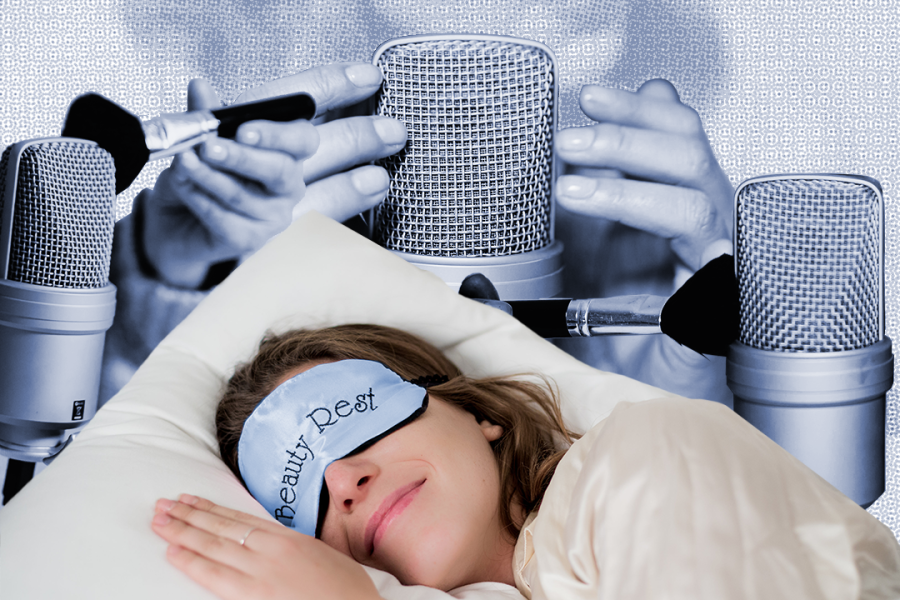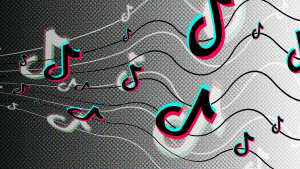Don’t Sleep on ASMR
How the ASMR community on YouTube helped me get some rest
April 12, 2022
I have never been a fan of Trisha Paytas. The YouTuber is notoriously problematic, constantly inflaming petty internet drama and generating new scandals at ear-splitting volumes. They have always just struck me as frightening. However, they’re also one of the main reasons I’ve gotten any sleep over the past two years.
About a year ago, I found Trisha’s video unboxing their new Apple Watch. It rocketed to the top of my favorite ASMR (autonomous sensory meridian response) videos, and I began watching it religiously to take naps, sleep or just relax, especially during the return to in-person classes this past fall. In direct contrast to their typical obnoxious and loud persona, their voice is soft and reassuring in their ASMR videos. I have never seen the end of the Apple Watch video because I’m sound asleep by the time they take out the instruction manual every single time.
In 2015, Trisha discovered and briefly joined the online ASMR community, where people make videos designed to produce a psychological and physiological sensation known as an autonomous sensory meridian response in the viewer.
Personal aversion to some sounds is no reason to discount what is largely a beneficial remedy.
ASMR is often described as “tingles” in the brain or up the spine, a type of enjoyable paresthesia, combined with a sense of relaxation and satisfaction. You might have felt it when a friend played with your hair or when someone whispered really quietly near your ear.
The Apple Watch video was not my first rodeo — in kindergarten, long before I had a word for the phenomenon, I felt ASMR tingles while watching a friend draw. I have been watching ASMR videos since 2017, when I stumbled across a video of someone brushing a microphone and found out that the sensation I had felt as a kindergartener was a well-documented phenomenon.
I’m not the only one who relies on ASMR. There have been ASMR videos on YouTube for over a decade, but the genre began enjoying real popularity in the mid-2010s with the rise of creators like Gibi ASMR and ASMR Darling, who now have millions of subscribers. The content also has other uses beyond tingles and naps: Comments under ASMR videos are perpetually filled with gratitude from viewers who cite ASMR as their personal antidote to everything from PTSD to panic attacks to depression.
I began putting on ASMR videos to give me something to focus on, and I found that they helped me settle down instantly.
Although the ASMR community has grown significantly as more people find out the experience is not unusual, ASMR content has not been treated very fairly in wider pop culture. The online ASMR community contains a wealth of videos covering a variety of “triggers,” as ASMR creators call them. These can include auditory triggers, like striking a match or tapping on a book, or visual ones, like sorting colored markers into different piles or drawing. I understand the urge to shudder at videos of people eating lunch or touching slime — personally, I don’t like those triggers either.
I understand YouTuber commentators scoffing at the more absurd and cringey roleplays. Even the idea of watching people perform mundane tasks can seem odd. But reducing the whole genre to its most divisive components misses the vast and fascinating variety of ASMR content available.
Writing off all ASMR as gross or bizarre ignores how life-changing it can be to people just trying to get some rest. A video of someone sorting markers by color might strike you as weird, but it’s not hurting anyone. Personal aversion to some sounds is no reason to discount what is largely a beneficial remedy.
My favorite videos, like Trisha’s, feature people doing everyday activities like flipping through magazines or reorganizing shelves, because it reminds me that there are billions of other people out there just going about their day, which I find to be a relaxing thought.
When I first began watching ASMR videos, I was mostly after the pleasant sensation of tingles. But that changed when the pandemic hit, and I found it increasingly difficult to quiet my mind before bed.
I have historically been quick to sleep and hard to wake, but I found myself struggling to delineate between daytime and sleep time without hours of restlessness in between. I began putting on ASMR videos to give me something to focus on, and I found that they helped me settle down instantly. Now, as my various roommates can attest, I’m regularly out before the 10-minute mark. Without it, I would be a sleep-deprived shell of the person I am now.
Putting on ASMR gives me a tangible way to flip the switch from day to night, awake to asleep
I think ASMR works so well because the act of choosing a video instantly signals to my brain that it’s time to sleep. Establishing a regular sleep schedule during college can be difficult, particularly when your days are varied because of assignments due and meetings to join. And if you, like me, tend to leave your schoolwork until the last minute, you might find yourself working late into the night.
It can be hard to quickly make the transition from anxiously writing an essay to a deep slumber, especially when you already have trouble sleeping. And not everyone has time for an elaborate nighttime routine to wind down. (If I sound bitter, it’s because I am — I have never managed to stick to a nighttime routine in my life, despite the beauty gurus telling me it’s a must.)
Repeatedly failing to stick to a 10-step self-care regimen frustrates me so much because I know for a fact that the process would help me relax before bed, but I often can’t find the energy or motivation to do so, leaving me to just brush my teeth and crash. Putting on ASMR gives me a tangible way to flip the switch from day to night, awake to asleep.
Trisha has recently returned to making ASMR content after seven years, a revival so random that I’m almost convinced it was an act of pity from Trisha as they saw me return to the Apple Watch video every night. Even though I’m still hesitant to praise Trisha for much, I am grateful for the sleep.















